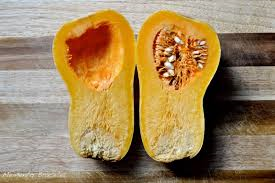Click here for the 'Seeds of Eaden' seed shop
This dish is a great festive dish that vegetarians will love and provides a great alternative to the turkey course.. You can prepare it the day before ready for roasting too.
Serves 2
Ingredients
1 butternut squash
1 leek
80 g Stilton cheese
50 g walnuts
3 tea spoon olive oil
2 tea spoon maple syrup
Method
Preheat the oven to 200C/gas mark 6.
Cut the butternut squash in half and scoop out the seeds. Place in a roasting tin and drizzle with oil.
Cook for 45 minutes until tender.
Chop the leek into thin slices and cook in a pan gently for a few minutes until it softens. Transfer to a bowl and add the walnuts.
Gently scoop out the flesh from the cooked squash and add to the bowl. Mix together and place back into the skins.
Sprinkle Stilton cheese on top and drizzle with maple syrup.
Roast for a further 15 minutes until golden brown.
For related articles click onto:
Artichokes Alla Romana
Chicken fried rice
Chicken stir fry
Chicken supreme
Chicken risotto recipe
How to cook artichokes
How to roast pork
How to roast turkey
Pumpkin Risotto recipe
Recipe for chicken fajitas
Recipe for Italian pizza
Recipe for Italian tomato sauce
Recipe for lasagna
Recipe for pea salad with mint
Recipe for pumpkin pie
Recipe for pumpkin puree
Recipe for pickled cucumber
Recipe for Salmon with lemon and herbs
Recipe Spaghetti bolognese
Recipe for spinach and broccoli fritatta
Recipe for tomato soup
Spiced brussels sprouts
Spicy meatballs in tomato sauce
Vegetarian recipes - vegetable fried rice

























